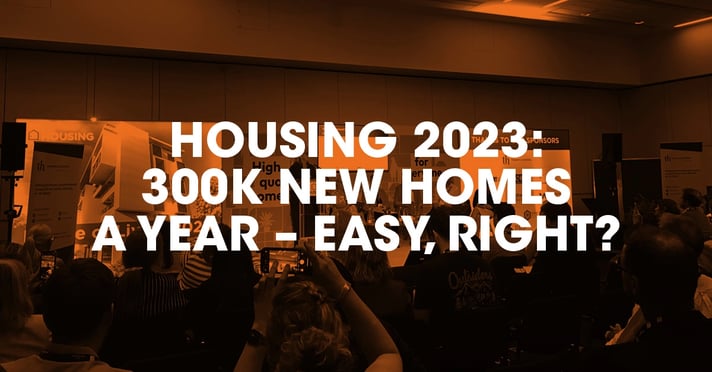The panel's conclusions
Polly Neate, chief executive of shelter, appealed for reform to planning, social housing, and the land market itself, saying: “A blanket target of 300,000 homes a year is meaningless when it doesn’t address the real emergency.”
“It’s a crisis of affordability,” she said. “There simply are not homes that low-income people can live a decent life in, and without social homes billions will continue to go into landlord’s pockets through housing benefits – the only way to stop the waste is investment in social housing.
“70% of the cost of a home is the land, so the land market needs to be reformed and planning must be reformed to prioritise social housing and renters.”
Dan Cook, chief executive of the Active Building Centre, contrasted the UK’s approach to other countries.
“Planning and funding are critical to get the volume of delivery up alongside quality and infrastructure,” he said. “The government in Australia develops alongside the private sector and takes a proactive approach, but our weakness is that soft infrastructure like shops lag behind.”
Expanding on the role of the state alongside the private sector, he said: “In Singapore, for instance, the state plays a significant role in owning the land, but sells the buildings on the land it owns, so 80% of stock is delivered by the government.
“Their home affordability and housing attainability index remain healthy for that reason, even if they do struggle with supply chain issues and have difficult providing homes for very low-income people.”
Ultimately, Dan sees the state as having an important role in leading housing delivery, saying: “The government must be there, and there needs to be competent provision to manage it at speed and volume.”
Nicola Clayton, of Project Etopia, focused on the need to embrace modern methods of construction (MMC), saying: “MMC is the only way we are going to make the changes we need to housing provision in this country.”
“Yes, MMC is easier and cheaper, but fundamentally the homes we are building are not currently fit for purpose,” she said. “Low volume, with quality so low it’s actually lethal, and inefficient to the point of fuel poverty.”
Expanding, she said: “It’s not just about social homes, but ones people can afford to live in. Not just rent, but bills and food, and better quality fuels.”
Lorraine Mealings, Chief Executive Officer of Bournemouth Churches Housing Association (BCHA), focused on the need for a mix of private and public services to meet our demands, saying: “In-house expertise is needed for any housing association but there’s room for everyone in the mix. Small organisations, private developers, housing associations, local authorities, and more.”
Angela Mansell, Managing Director of Mansell Building Solutions, also used her time to make the case for an expansion in the use of MMC in response to the current crisis.
“A key challenge to delivering homes is flaws in the supply chain,” she said. “Even if we choose to build, find the land, get funding, if we keep trying to build traditionally we’ll be fraught with issues and miss target – traditional brick, block and timber with brick envelope is not the future of homes built at scale.”
Pointing out the need for central cooperation on developing and deploying MMC, Angela said: “We need collaborative spaces like the Off-Site Homes Alliance, where’s there’s plans, vetting, and certainty for builders, housing associations, and everyone else on the chain.”
Summary
For the past two years a common thread has emerged at the CIH’s Housing event – we attend panels and discussions and speeches from people who can articulate clearly, and in agonisingly plain terms, the scale and the consequences of our housing emergency.
The waste, the roadblocks, the institutional difficulties, and the opportunities to remedy this are laid out and then, metaphorically of course, the assembled experts turn to central government and invite a response. A response which so far hasn’t come at the kind of scale the sector is asking for.
The route to achieving 300,000 new homes a year, a target that some political commentators say would take us more than 20 years to have a meaningful effect on house prices on its own, remains murky as we hurtle towards a new general election.
Stakeholders in planning, land use and sales, builders and developers, supply chains, skills and more wait for the major changes, or at least some long-term certainty, that lets them set their plans to remedy the crisis in motion, but only time will tell whether future policy changes or the next general election brings the kind of significant change that the sector is looking for.


Have your say